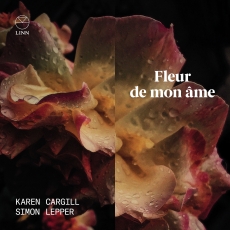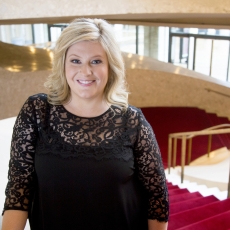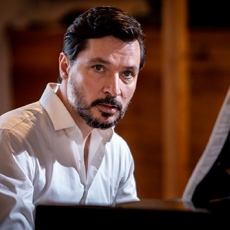Karen Cargill - Fleur de mon âme - Planet Hugill
Karen Cargill is well-known to opera audiences for Wagner performances, but those with her regular recital partner pianist Simon Lepper show the Scottish mezzo-soprano to be equally comfortable in other milieus. The duo's earlier collection of lieder by Gustav and Alma Mahler is now followed by a set featuring fin-de-siècle material by Reynaldo Hahn, Claude Debussy, Ernest Chausson, Joseph Jongen, and Henri Duparc. Recorded at the Glasgow Royal Concert Hall in February 2020, the sensual renderings on Fleur de mon âme clearly demonstrate the singer's natural affinity for French material.
The two are well-equipped to take on the challenge, Cargill a singer of renown who's performed with orchestras and at opera houses throughout the world and Lepper a specialist in song accompaniment who's played with numerous top-tier singers, among them Ilker Arcayürek, Gillian Keith, and Kitty Whately. Though the release primarily features Cargill and Lepper, Jongen's “Calmes, aux quais déserts” and Chausson's “Chanson perpétuelle” augment the duo with four string players from the Royal Scottish National Orchestra.
Hahn was not only a member of Proust's social circle but an accomplished composer too. Consistent with a philosophy about singing that promoted restraint over effusion, the five art songs here (of the 100 or so he produced) provide a refined entry-point to the collection. The exquisite control Cargill brings to the pretty opener “À Chloris” distills the composer's aesthetic into three magnificent minutes, and her riveting performances of the lyrical “L'énamourée” and haunting “Infidélité” accentuate even more the command she brings to her vocal instrument.
Written three years after 1894's Prélude à l'après-midi d'un faune and five before Pelléas et Mélisande, Debussy's Chansons de Bilitis is as aromatic and sensual as expected. Drawing on a poetic work published in 1894 by Pierre Louÿs that purported to be translations from an ancient Greek text about the life of a sixth-century BC woman, the three songs are quintessential Debussy in their elegance and refinement. They're not lacking for intense emotional expression, either, with the brooding central song, “La chevelure,” particularly powerful in that regard and the closing “Le tombeau des naïades” registering strongly for the passion of its protagonist's convictions.
The addition of the string quartet immediately sets Jongen's “Calmes, aux quais déserts” apart from the eight songs preceding it, but it's the dreamlike flow of the Belgian composer's writing and Cargill's spellbinding delivery that's most responsible for its potency. Chausson's “Chanson perpétuelle” (1898-9)—his last completed work—likewise benefits from the strings' involvement in conveying the despair of text about abandonment (translated, “My beloved has gone away / Taking with him my desolate heart”), with a suitably anguished Cargill also intensifying the emotional effect. Sunnier by comparison are Chausson's “Sérénade italienne,” which describes lovers on a boat embracing under the stars, and “Le colibri,” whose text likens the hummingbird's drinking from a red hibiscus to a lover's musing about a first kiss with another.
Fleur de mon âme concludes with four romantic songs by Duparc, each rife with emotional tension. Whereas longing is affectingly communicated in “L'invitation au voyage” in the narrator's wish for a better life in another land, “Chanson triste” offers a ravishing sampling of Duparc's lyrical side. Moving too is “Extase” in its conjoining of love and death (“On your pale breast my heart is sleeping / A sleep as sweet as death”), after which “Phidylé” caps the release with a terrific display of Cargill's and Lepper's artistry.
For the full measure of a wholly transporting hour, Fleur de mon âme allows listeners to luxuriate in Cargill's voice and Lepper's attentive piano. The artistic success of both this project and the earlier Mahler-focused one clearly argues in support of further volumes by the duo, and it'll be interesting to discover which composers and works the two will focus on next.


